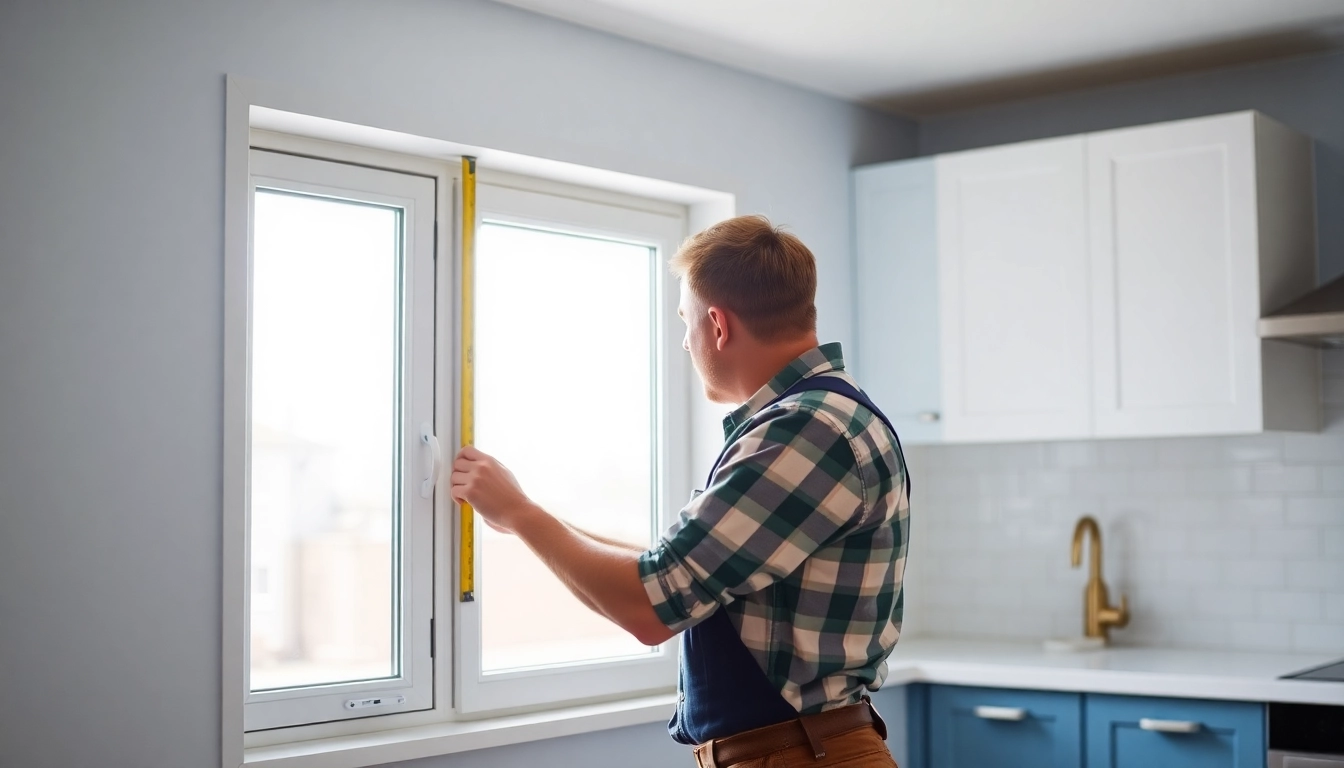Choosing the right window contractor near you is about aligning your home’s goals with reliable workmanship, clear communication, and durable results. A qualified professional will assess your current windows, determine whether replacement or repairs are best, and guide you through material choices and installation timelines. For more context, explore this resource: window contractors near me.
What a window contractor near me can do for you
Window contractors provide end-to-end services that start with a thorough assessment and end with a finished, functioning installation. Their role spans diagnostic testing, product selection, and coordinating permits, to on-site installation, sealing, and post-installation support. The goal is to improve comfort, curb appeal, and home value while reducing energy waste and maintenance needs.
Assessment: replacement vs repairs
The decision between replacement and repair hinges on the window’s age, condition, and performance. If frames are rotting, sashes are warped, or seals have failed, replacement often yields a better long-term return. For minor issues—hardware wear, stuck sashes, or chipped glazing—repair can be cost-effective. A professional will evaluate frame integrity, glazing performance, air and water leakage, and overall energy efficiency to recommend the most durable solution within your budget.
Material options: vinyl, wood, fiberglass
Material choice affects aesthetics, maintenance, and performance. Vinyl is affordable, weather-resistant, and low-maintenance; it’s ideal for harsh climates and busy households. Wood offers warmth and customization but requires regular upkeep and potential susceptibility to moisture. Fiberglass blends strength with stability and often performs well in extreme temperatures. A contractor helps balance cost, climate considerations, and design goals to pick the best fit for your home.
Timeline, permits, and scheduling
Installation timelines vary by project scope, weather, and permit requirements. A typical full replacement may take a few days, while repairs can be completed in hours. Licensed contractors coordinate permits when required, ensure code-compliant installation, and provide a clear schedule with milestones—from measurement and ordering to installation day and final inspection. Expect pre-install prep, protection of surrounding finishes, and post-install cleanup as standard steps.
How to choose a window contractors near me you can trust
Credentials and certifications
Verify licensing and insurance to protect against risk. Look for manufacturer certifications and stable training records, such as installers trained on specific product lines and energy-efficiency standards. Certifications signal adherence to installation best practices, warranty requirements, and safety protocols. When in doubt, request documentation and contact references to confirm legitimacy and capacity for your project scale.
Reviews and case studies
Real-world examples matter. Review a contractor’s recent projects that resemble yours in scope and climate. Ask for references, view before-and-after photos, and contact past clients about punctuality, workmanship quality, and communication. A solid track record with measurable outcomes—tight seals, reduced drafts, and improved comfort—is a strong predictor of a successful engagement.
Transparent quotes and warranty terms
Obtain itemized proposals that separate materials, labor, permitting, and disposal. Clarify warranty coverage for products and workmanship, including transferability and what is excluded (e.g., storm damage or user misuse). A clear written contract with defined timelines and payment milestones reduces surprises and protects both parties.
Cost considerations for window contractors near me
Upfront costs vs long-term savings
Upfront costs include materials, labor, removal of old units, and any structural work. Long-term savings come from energy efficiency, reduced maintenance, and improved home value. A well-structured estimate should outline the expected payback period based on current energy bills, weather sealing improvements, and potential rebates.
Energy efficiency, insulation, and rebates
Energy-efficient options—such as double or triple glazing, low-emissivity coatings, and proper insulating gas fills—can significantly lower heating and cooling costs. Look for products with reputable energy ratings and compatibility with local utility rebate programs. A contractor can help identify applicable incentives and guide you through the claim process.
Brand selection, warranties, and price ranges
Brand choice influences price and performance. Premium brands may offer longer warranties and broader color or style options, while regional brands can provide personalized service. Weigh the value of extended warranties against the perceived risk of product failure and consider who will service the warranty if issues arise.
Installation process from measurement to finish
Precise measurement and fit verification
Accurate measurements prevent gaps that cause drafts or water intrusion. Professionals use multiple measurements for each opening and verify square and plumb conditions. This diligence ensures a snug fit, reduces call-backs, and supports the overall performance of the window system.
Removal, flashing, and waterproofing steps
Removal of old units is followed by careful flashing and sealing to manage moisture. Proper sill pans, flashing tapes, and weather-resistant barriers keep interior finishes dry and protect the building envelope. A seasoned installer coordinates these steps to maintain structural integrity and avoid water intrusion.
Final inspections and aftercare
After installation, conduct a thorough operation check: tilt, lock, and drainage; inspect seals and caulking; and verify energy performance. Request maintenance guidance and schedule any required follow-ups. Documentation, warranty registration, and a simple care plan help you sustain performance over time.
Maintenance, repairs, and ongoing support
Preventive maintenance and service cycles
Establish a routine: annual seal inspection, gasket lubrication where applicable, and periodic cleaning of tracks and frames. Proactive maintenance reduces the likelihood of leaks, fogging between panes, and hardware failures. A service plan can formalize these tasks and remind you when to schedule them.
Common repair scenarios and solutions
Repairs often involve hardware replacement, seal resealing, or glazing repairs. Condensation between panes typically signals a failed seal and may require a pane unit replacement. For minor issues, in-house troubleshooting or fast part replacements minimize downtime and disruption.
Service plans and emergency support
Consider service plans that include priority scheduling, emergency response windows, and discounted parts. Clear service-level agreements define response times, coverage areas, and what constitutes an emergency. These programs protect your investment and help preserve performance during extreme weather or unforeseen incidents.
